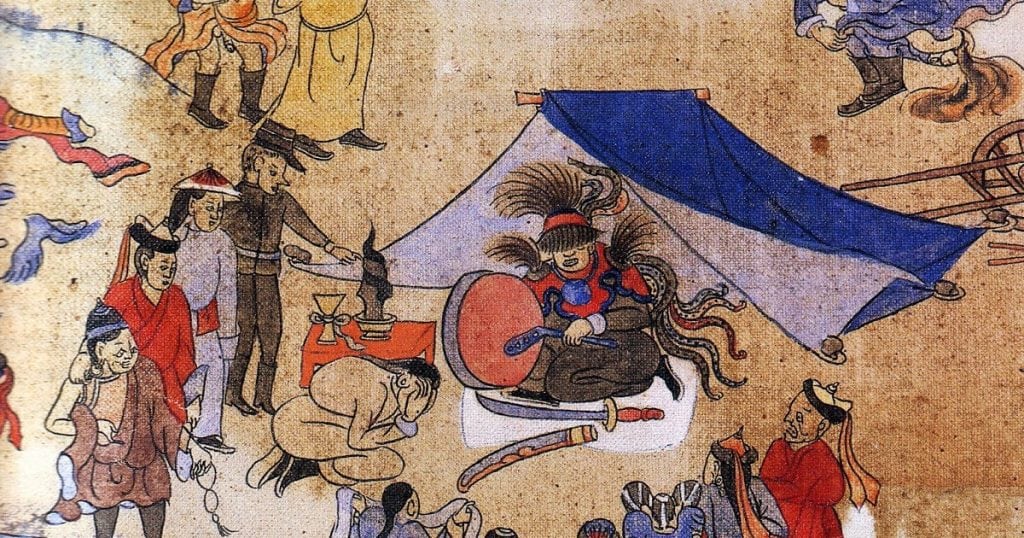Firstly, then, it is necessary to discuss our ancestors’ general conception and understanding of the universe, in particular, the matters of “direction” and “color”.
Researchers of this explained their understanding by dividing the directions into “good” |West and South| and “bad” |East| sides. Thereafter, some of them attempted to provide more detailed explanations to find out the reasons behind this division into good and bad directions. Some reached the conclusion that “The folktales and legends which have influenced the contents of folktales such as the “Avay Gesser” story might be the main basis for the ancient decision by our ancestors that the west is good and the east is bad.
While it is reasonable and laudable to make such a conclusion concerning good and bad directions |especially for a deeper understanding of the subjects|, in my opinion, it is insufficient. Due consideration of the authors, ages, and the purposes for which these folktales, fables, and legends were composed is essential. For instance, the appearance of 99 Tengger |Heaven| in the “Avay Gesser” story is evidence that it was written after the time of Gesser Haan |the eleventh century| and was probably written between 1600 and 1800. The problems concerning the directions or sides of the universe can be more usefully related to Mongolian astrology than to folktales.
The foundation and development of Mongolian Astrology and Shamanism are closely intertwined. Astrology can be understood and explained only by a few talented and intelligent people with natural ability. Historically, most of these people were also Shamans. So Mongolian astrology may generally be considered as “Mongolian Shamanist astrology”. In ancient times, the shamans used their knowledge to explain such phenomena as the movement of the sun, moon, stars, duration of the day, night, month, year and the positions of the Heavenly bodies. They divined the age of men and animals, the coincidence of men’s birth year and “mengge” |birth marks| and suchlike. They carried out their rites and customs, helped others to overcome pain, suffering, difficulty, and loss, and provided a basis for social order and mutual understanding.
Various ancient Central-Asian tribes had different conceptions of the directions of the universe and the colors that represented them. According to G.Sujhbaatar, the Hunnus, Tibetans, Chinese, and Turegs all imagined that red represented South and Black North. In contrast, the Pubes considered that yellow, red, white and green represented North, South, East, and West respectively. The main reason for our ancestors’ conception of this may be due to the belief that blue represented Heaven worship and that white symbolized a kind heart and clean mind.
Black was symbolic of the invisible world of the afterlife. As a result, they imagined black as North, red as South, blue as East and white as West.

